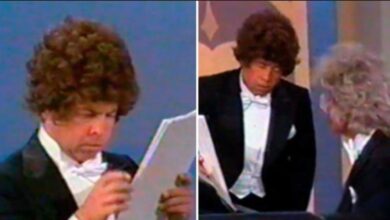The Spencer Davis Group’s “Gimme Some Lovin’” Ignites a New Era of Blue-Eyed Soul in 1966
When The Spencer Davis Group released “Gimme Some Lovin’” in the fall of 1966, they didn’t just deliver another chart hit—they unleashed a raw, urgent anthem that would reshape the future of rock and blue-eyed soul. Written in a flash of inspiration and recorded with blistering energy, the song rocketed up the charts, reaching No. 2 in the UK and breaking into the Top 10 on the Billboard Hot 100 in the United States. Its success bridged the Atlantic and demonstrated that a British band could capture the grit and power of American R&B without losing authenticity.
The Spencer Davis Group was already gaining momentum before “Gimme Some Lovin’” turned them into international stars. Formed in Birmingham, England, in 1963, the band was anchored by Spencer Davis on rhythm guitar, but its true dynamo was a teenage prodigy named Steve Winwood. With a voice that belied his years—gritty, soulful, and bursting with feeling—Winwood became the heart of the group’s sound. Alongside his brother Muff Winwood on bass and Pete York on drums, the band earned a reputation for their intense live performances and deep love for American blues and R&B.
The story behind “Gimme Some Lovin’” is nearly as legendary as the song itself. Struggling to find a hit that would maintain their momentum after “Keep On Running” and “Somebody Help Me,” producer Chris Blackwell pushed the band to come up with something fresh—and fast. Reportedly, “Gimme Some Lovin’” was written, arranged, and rehearsed in under half an hour during a frantic studio session. Steve Winwood hammered out the infectious organ riff that would anchor the track, while the rest of the band jumped in to build the groove around it. The urgency of its creation is palpable in every note.
The recording of “Gimme Some Lovin’” captured that spontaneous spirit. Blackwell kept the production straightforward, emphasizing Winwood’s raw vocal delivery and the swirling Hammond organ that gave the song its distinctive texture. The pounding bass and drums kept the momentum driving forward, creating a sound that felt almost live. Unlike the polished studio techniques dominating much of the mid-’60s pop scene, this record felt wild, alive, and just a little bit dangerous—exactly the edge that would set it apart.
Upon its release, the song was an instant sensation. It charged up the UK Singles Chart to No. 2, held back only by Tom Jones’s “Green, Green Grass of Home.” In America, where the British Invasion was still in full swing, “Gimme Some Lovin’” broke into the Billboard Top 10, reaching No. 7. The single’s raw energy resonated with rock and R&B fans alike, giving the band a foothold in the lucrative U.S. market and opening doors for extensive touring opportunities.
Culturally, “Gimme Some Lovin’” arrived at a crucial moment when musical barriers were crumbling. It blurred the lines between rock, soul, and rhythm and blues in ways few songs had before, helping to usher in an era where artists could draw freely from multiple genres. It also proved that British bands could pay homage to African-American music with respect and intensity, not imitation, laying groundwork that would influence bands like Led Zeppelin and Humble Pie in the coming years.
The song’s explosive success propelled The Spencer Davis Group to new heights. They toured relentlessly across Europe and the United States, with Steve Winwood earning particular praise for his electrifying stage presence and musicianship. Yet success brought tension; by 1967, Winwood—chafing at the limits of the band’s pop-soul format—would leave to form Traffic, a move that would lead to even greater creative heights for him but spelled the beginning of the end for The Spencer Davis Group’s original lineup.
The influence of “Gimme Some Lovin’” stretched far beyond the band’s own career. Its fusion of gospel-like urgency, rock energy, and soul depth became a template for countless acts that followed. Elements of its pounding rhythm and fiery vocal approach can be heard in the music of bands ranging from The Black Crowes to Bruce Springsteen’s E Street Band, all of whom carried forward the tradition of high-energy, heartfelt performance.
Over the years, “Gimme Some Lovin’” has been covered by a wide range of artists, each putting their own spin on the classic. Notably, the blues-rock supergroup The Blues Brothers brought it roaring back into the spotlight in 1980 with their high-octane cover, introducing it to an entirely new generation. Other renditions by Olivia Newton-John, King Curtis, and even Grand Funk Railroad attest to its versatility and enduring appeal.
At the time of the song’s release, The Spencer Davis Group was navigating a rapidly changing musical landscape. Psychedelia was beginning to seep into popular music, and the simple, direct emotional punch of a song like “Gimme Some Lovin’” stood in stark contrast to the more experimental sounds emerging around it. Yet it was precisely this straightforward, visceral quality that helped the track endure, even as trends shifted.
Decades later, the song remains a staple of classic rock radio, movie soundtracks, and sports arenas. Its driving beat, infectious hook, and powerhouse vocal still have the ability to ignite audiences, whether at a festival, a bar, or through a pair of headphones. Lists of the greatest rock songs of all time routinely feature “Gimme Some Lovin’,” a testament to its timeless energy and universal appeal.
In production terms, the track’s success reaffirmed the value of capturing spontaneity and raw emotion in the studio. Producers who followed—including figures like Glyn Johns and Tom Dowd—recognized the magic that can happen when musicians are allowed to play with urgency and instinct, rather than overthinking every detail.
Though The Spencer Davis Group would never again scale the same commercial heights after Winwood’s departure, the legacy of “Gimme Some Lovin’” remains deeply intertwined with their name. The song’s thrilling immediacy and crossover success helped to cement their place in the pantheon of influential 1960s rock and soul acts.
Ultimately, “Gimme Some Lovin’” endures because it captures a feeling that never grows old—the thrill of youthful energy, the infectiousness of a simple, perfect groove, and the power of a voice singing straight from the gut. More than just a hit single, it stands as a roaring, jubilant shout that continues to echo across the decades, reminding listeners that sometimes, all you need is a beat, a riff, and a whole lot of heart.





